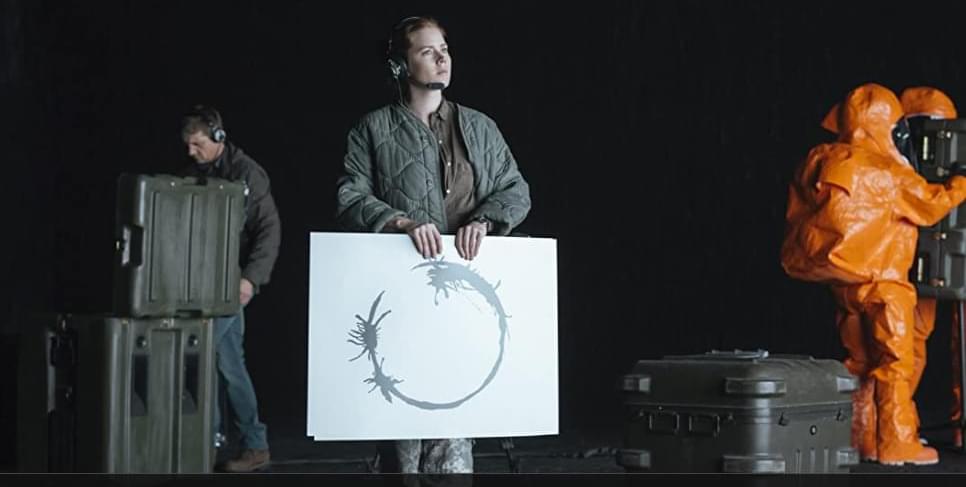Some thoughts about possible communication with intelligent alliens, for more info see:
Contact with intelligent aliens would happen on their terms, not ours.

Longer, Healthier, And More Productive Lives — Dr. Jean Accius Ph.D., Senior Vice President, AARP
Dr. Jean C. Accius, PhD, is Senior Vice President, AARP Global Thought Leadership (https://www.aarp.org/). Dr. Accius leads a team in positioning AARP (formerly known as the American Association of Retired Persons) as a global thought leader, identifying emerging trends around the world, cultivating and elevating new ideas, forging global strategic alliances that become the foundation for collaboration and sparking bold solutions to change systems and improve the lives of the global population as it ages.
Dr. Accius is a passionate champion and catalyst for changing how the world sees and values aging. He is an internationally recognized thought leader on aging, longevity, equity, health systems transformation and modernizing the delivery and financing of long-term care. With tri-sector experience and deep knowledge, he has a strong track record of building high-performing teams, managing cross-functional operations and processes, and developing innovative and actionable solutions, policies, and programs to close the opportunity gap so that everyone can live longer, healthier and more productive lives.
A highly sought after author and speaker, Dr. Accius has been quoted by or appeared in numerous media outlets, including The New York Times, Forbes, TIME Magazine, USA Today, Reuters, Politico, Next Avenue, ESPN’s Undefeated, Rolling Out, NationSwell, Congressional Quarterly, and Huffington Post. In 2,020 he facilitated several sessions at the 50th annual World Economic Forum in Davos, Switzerland and also engaged nearly 300 leaders across industries and sectors, including 20 ambassadors and many delegates, at the United Nations.
Dr. Accius is a member of the National Association of Corporate Directors and has held a variety of board and advisory positions including Justice in Aging, the American Society on Aging, Leadership Maryland and the American University School of Public Affairs Board of Advisors.
Anna’s guest at Women’s Radio was Dr Ian C E Hale I’m an Autistic person. It’s an indivisible part of who I am as an individual.
Annas guest at Women’s Radio was Dr Ian C E Hale ‘All things Autism will be aired at 1pm and 1am every day this week. Please see www.womensradiostation.com
Dr Ian C E Hale shared:
To be clear … it’s important to put my book and other work into context by knowing a little of their origins. I’m an Autistic person. It’s an indivisible part of who I am as an individual; it informs, goads and limits every thought and act of my life-but I refuse to let it define me. I’m a sportsman, poet, photographer, medical scientist and more-but first and foremost, a human being, with the same fears, hopes, weaknesses and feelings as everyone else.

The NHS has launched the world’s largest trial of a potentially gamechanging blood test that aims to detect more than 50 types of cancer before symptoms appear.
More than 100,000 volunteers are being sought to provide blood samples at mobile test clinics in regions across England from Monday to assess how well the test works in the health service.

BioNTech, the company that partnered with Pfizer to develop a COVID-19 vaccine, is now testing whether mRNA can be used to treat cancer.
Messenger RNA (mRNA) vaccines work by tricking our bodies into producing a small part of a virus. For the Pfizer–BioNTech COVID-19 vaccine, this involved isolating the spike protein of SARS-CoV-2 (the virus that causes COVID-19). This protrudes from the outer surface of the virus and is used to latch onto specific cells in your body, infecting them and causing more copies of the virus to be made. Researchers obtained the spike protein’s RNA, then created mRNA based on these molecular instructions.
Once injected, the mRNA vaccine will instruct cells to build spike proteins in large volumes – not the virus itself, just the spike protein. This is enough to kickstart our immune response, training the body to recognise the spike protein, without making us sick. B-cells (also known as lymphocytes) can last for months or years and will “remember” the spike protein, making Y-shaped proteins called antibodies to destroy any SARS-CoV-2 encountered in the future.


Tesla may already have a lot of projects on its plate, but the company still appears to be exploring other projects for its product lineup in the future. Among these is a “Robo Van” that’s optimized to transport people with disabilities, among others.
References to the Tesla “Robo Van” were reportedly shared by CEO Elon Musk during the company’s recent all-hands meeting, according to individuals familiar with the topics covered in the event. Apart from the “Robo Van” being capable of transporting large numbers of people, Musk reportedly highlighted that the upcoming vehicle would be designed to address the needs of passengers with disabilities.
This suggests that the Tesla “Robo Van” would be optimized for easy ingress and egress, making it perfect for passengers who may have difficulty getting into conventional vehicles. Features such as active air suspension, similar to the one used in the Cybertruck, would be particularly useful for disabled passengers as well, as they would make it easier for items such as wheelchairs to be loaded and unloaded from the Tesla “Robo Van.”

While is seems like the majority of the longevity space is currently overly captivated by the Aubrey de Grey/SENS debacle, the U.S. National Academy of Sciences, Healthy Longevity Global Innovator Summit is now beginning — Most interestingly, former R&D Head at PepsiCo, Dr. Mehmoud Khan, will be speaking in his new role as CEO of the Hevolution Foundation; a potential multi-billion $$$ initiative with a longevity angle — Everyone should keep their eye on this one…
The National Academy of Medicine (NAM) will hold its inaugural Healthy Longevity Global Innovator Summit in September 2,021 with support from Johnson and Johnson Innovation and The John A. Hartford Foundation. The event will be virtual and held over three days, September 13 14, and 22 and feature an immersive, interactive digital venue with unique opportunities to engage and connect.
The Innovator Summit will honor the 154 international Healthy Longevity Catalyst Awardees from 2020 and bring together industry leaders, academics, researchers, scientists, and entrepreneurs whose work contributes to the field of healthy longevity. Attendees will learn about the early-stage, award-winning innovations, hear from leaders in the field of healthy longevity, and take advantage of various opportunities to interact directly with other attendees, with a view to fostering interdisciplinary and cross-sector collaboration.
The event will feature remarks from the President of the National Academy of Medicine, Dr. Victor Dzau, and Catalyst Award Sponsors, Dr. William Hait, Global Head of Johnson & Johnson External Innovation, and Dr. Terry Fulmer, President of the John A. Hartford Foundation. Visionary keynote speakers will share insights into launching biotechnology start-ups and opportunities for groundbreaking science in the field of longevity. Participants will also be able to enjoy a robust selection of breakout sessions and the chance to network with Catalyst Award winners, researchers, venture capitalists, and more in one-on-one and small group settings.

Using a groundbreaking new technique at the National Institute of Standards and Technology (NIST), an international collaboration led by NIST researchers has revealed previously unrecognized properties of technologically crucial silicon crystals and uncovered new information about an important subatomic particle and a long-theorized fifth force of nature.
By aiming subatomic particles known as neutrons at silicon crystals and monitoring the outcome with exquisite sensitivity, the NIST scientists were able to obtain three extraordinary results: the first measurement of a key neutron property in 20 years using a unique method; the highest-precision measurements of the effects of heat-related vibrations in a silicon crystal; and limits on the strength of a possible “fifth force” beyond standard physics theories.
The researchers report their findings in the journal Science.

As we age, our bones become thinner, we suffer fractures more often, and bone-diseases such as osteoporosis are more likely to occur. One responsible mechanism involves the impaired function of the bone-marrow stem cells, which are required for the maintenance of bone integrity. Researchers from the Max Planck Institute for Biology of Ageing and CECAD Cluster of Excellence for Ageing Research at the University of Cologne have now shown that the reduced stem cell function upon aging is due to changes in their epigenome. They were able to reverse these changes in isolated stem cells by adding acetate. This fountain of youth for the epigenome could become important for the treatment of diseases such as osteoporosis.
Aging Researchers have been looking at epigenetics as a cause of aging processes for some time. Epigenetics looks at changes in genetic information and chromosomes that do not alter the sequence of the genes themselves, but do affect their activity. One possibility is changes in proteins called histones, which package the DNA in our cells and thus control access to DNA. The Cologne research group of Peter Tessarz has now studied the epigenome of mesenchymal stem cells. These stem cells are found in bone marrow and can give rise to different types of cells such as cartilage, bone and fat cells.